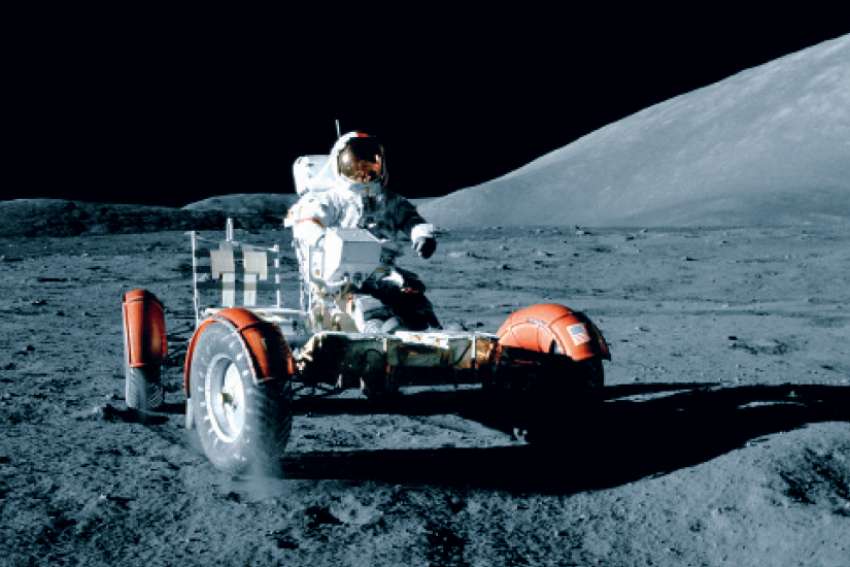I write this on Dec. 19, as most Germans are watching the Apollo 17 splashdown on TV, and the moon is shedding its cold light over Regensburg, turning the muddy Danube into a ribbon of silver.
In these circumstances I am reminded of a conference that Professor Joseph Ratzinger gave to the priests of Munich archdiocese just after a previous Apollo mission. Theme of the study session: “Why I stay in the Church today.” Here in Germany, as everywhere else, the Church has lost its share of practising priests since the Second Vatican Council.
Borrowing a figure of speech from the early Fathers, Professor Ratzinger compared the Church to the moon, since its essential role is to reflect the light of Christ who is the true sun of the world.
There is no doubt that our understanding of the moon has changed in the last 10 years. What was once the subject of nursery rhymes and romantic songs has now become the object of scientific research. In the past decade we have seen fulfilled the Jules Verne dream of travelling to the moon. Men of our time have not only walked on the surface of the moon, but recently even brought their nefarious vehicles to drive around collecting rock samples for analysis.
The result has been the demythologization of the moon. No more is it regarded as a friendly face in the heavens, smiling down on children and lovers, but as an indifferent satellite of the Earth, composed of barren rock, pock-marked by millions of meteorites and covered with a thick layer of dust. But still it shines, and with no less lustre than before.
Meanwhile, something similar has been happening to our understanding of the Church. After the earthly Church of the early Middle Ages and the very worldly popes of the Renaissance, came the purification of the Reformation and the counter-Reformation.
But it was only after the French Revolution that the Church really broke away from the modern world and tended to float into space, as though above the laws of failure and criticism. It was in this context that the doctrine of papal infallibility was defined at the First Vatican Council.
Since this doctrine has seldom been properly understood, some have equated it with the personal infallibility of the Holy Father while others have extended papal infallibility to cover the entire range of official and semi-official pronouncements of the Church.
Then came Vatican II and the scientific analysis of the Church. Once again, as with the moon, the result can only be called demythologization. The Church is caught in the Earth’s magnetic hand and is covered with the scars and dust of history. The Council has taught us to see ourselves as the Church and to recognize its faults as our own, instead of referring our unsolved problems to a distant bureaucracy and projecting our unrealized ideals of holiness onto the Pope himself.
Here we come back to the point of Professor Ratzinger’s comparison. Our understanding of, and our feeling for the Church may have changed in the past decade, but its essential role remains the same.
When the Council Fathers defined the Church as the Light of Nations, they were not claiming for it any radiance except that of the risen Lord, nor for us any salvation except in His light.
(To explore more from The Catholic Register Archive, go to catholicregister.org/archive)
Support The Catholic Register
Unlike many other news websites, The Catholic Register has never charged readers for access to the news and information on our site. We want to keep our award-winning journalism as widely available as possible. But we need your help.
For more than 125 years, The Register has been a trusted source of faith based journalism. By making even a small donation you help ensure our future as an important voice in the Catholic Church. If you support the mission of Catholic journalism, please donate today. Thank you.

